FutuRaM involves 28 partners (associations, companies, universities) and over 100 experts from different scientific and technical fields covering six waste streams: batteries, electrical and electronic equipment, vehicles, mining; slags and ashes, and construction and demolition. Our researchers often engage in passionate conversations across their fields and most importantly about the relevance of this project. Their enthusiasm is fascinating so without further ado, meet the researchers behind FutuRaM!
Please introduce yourself both personally and professionally in a few sentences. We’d like to know a bit more about your day-to-day job, where do you live, what did you study.
Hi, I’m Stewart a sustainability researcher living in the Netherlands and doing a PhD at the University of Leiden. I grew up in Australia where my family has a goat farm and I have always felt a strong connection to the natural world. Travel and science are both great ways for me to explore this passion and I think I’ve learned just as much while backpacking as I have in the lab. When I’m not coding or reading, I’ll be fixing up abandoned bikes or working in my garden. I also love to take my paddle board out on the river or cruise through the pretty canals in Leiden.
How did you end up studying and working in this field?
In high school I loved learning about history, politics, and all kinds of science, but it was chemistry that really captured my imagination. I went on to study a BSc. in organic chemistry but after working in the lab for a few years I wanted some more adventure. Travelling in Southeast Asia and living in in the Philippines for a couple of years was wonderful, but it really affected me to see first-hand how widespread and severe so many avoidable environmental problems are.
This has strongly motivated me to work in the field of Industrial Ecology, where we work to try to estimate and work out ways to decrease the negative effects of human actions on the biosphere. After an MSc at the University of Leipzig and another year of sustainability studies at Sydney University, I’ve ended up at the CML in Leiden where I focus on assessing impacts of future recycling systems and the potential of the circular economy. This is a fascinating field because, apart from the science and programming, it can involve so many other areas like economics, politics, philosophy, and behavioural psychology.
How would you explain your favourite research project (even if unrelated to FutuRaM) to somebody outside the scientific community? Why did it capture your attention?
The Human Genome Project. Amazing! They explored and mapped out all the code inside our DNA (3.1 billion base pairs). It is the world’s largest collaborative project to date. Over 15 years, with $3.8 billion dollars, tens of thousands of scientists worked together to create a knowledge base about our genetic makeup (ahead of schedule and under budget!). The impacts from this are already here, advancing medicine and science, and sparking whole new industries (think cancer diagnosis, gene therapy and CRISPR). Collaboration on big projects is difficult, but if there is passion for a common goal, extraordinary things can happen.
What do you find the most intriguing about this project and why? What do you hope to achieve with FutuRaM?
FutuRaM is a hugely ambitious initiative that aims to produce important knowledge related to the future of secondary material recovery and the circular economy. There are so many interesting aspects in our work, and we have an amazing team full of inspired and talented researchers from all over the world. Apart from the science, I’ve made some close connections with some of my FutuRaM colleagues, and this just adds to my motivation to work together on this important project.
How does your expertise and research at the university relate to FutuRaM?
Building on FutuRaM into my PhD research, I would like to develop a generalised framework for making assessments related to recycling and material recovery systems. Taking the modelling structures that we build for the EU in FutuRaM and expanding them to make an easily applicable open-source software tool. Something that could be used in any country by engineers, economists, or other decision makers when they want to explore the possibilities of developing their own secondary raw material recovery systems.
How would you simplify and explain the goal of FutuRaM to a passerby who has never heard of EU funded projects and CRMs?
Our quality of life depends on having reliable to access to raw materials. At the same time, we need to ensure that we minimise the environmental impacts of resource extraction. One of the best ways to do this is by developing secondary raw material recovery systems and promoting the circular economy. In FutuRaM we are working to develop knowledge of these systems and how they could develop in the Europe toward 2050. Being able to model this and make predictions about resource availability and impacts is critical if we are to make progress toward a more sustainable future.
